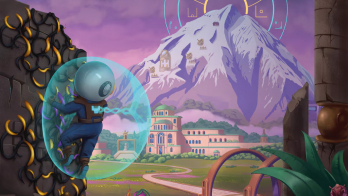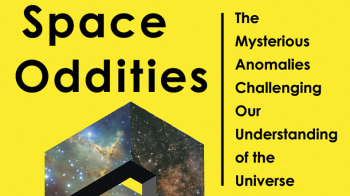
These days, in certain parts of the world at least, “hadron collider” and “Higgs boson” are practically household names. This is a consequence of the LHC, and the global communications that surrounded its construction, switch-on and eventual discovery of the Higgs boson. How should the next major project in particle physics be communicated to ensure its reach and success?
Communication is increasingly seen as integral to the research process, and is one of the strands of the open symposium of the European Strategy for Particle Physics (ESPP) update, which takes place from today in Granada, Spain. The ESPP update takes on board worldwide activities in particle physics and related topics, and is due to conclude early next year. It aims to reach a consensus on the scientific goals of the community and assess the proposed projects and technologies to achieve these goals. Though no decisions will be made now, the process is hoped to bring clarity to the question of which project will succeed the LHC following the end of its high-luminosity operations in the mid-2030s.
The landscape of communications has changed dramatically since the pre-web/mobile days of the nascent LHC. In one of 160 written contributions to the ESPP update, the International Particle Physics Outreach Group (IPPOG) emphasises the strategic relevance of concerted, global outreach activities for future colliders, stating that the success of such endeavours “depends greatly on the establishment of broad public support, as well as the commitment of key stakeholders and policymakers throughout Europe and the world”. IPPOG proposes that particle physics outreach and communication be explicitly recognised as strategic pillars in the final ESPP update document in 2020.
A contribution from the European Particle Physics Communication Network with support from the Interactions Collaboration highlights specific challenges that communicators face. These include the pace of change in social media, the speed of dissemination of good news, bad news and rumours, and the need to maintain trust and transparency in an era where there appears to be a popular backlash against expert opinion. The document notes the complexities of maintaining press interest over long timescales, and in conveying the costs involved: “Proposals for major international particle-physics experiments are infrequent, and when they are proposed, they seem disproportionately expensive when compared to other science disciplines”. A plenary talk on education, communication and outreach will take place on Wednesday at this week’s symposium. The European Strategy Group has also established a working group to recognise and support researchers who devote their time to such activities.

Consensus in the community is a further factor for communications. In the early 1990s, when the LHC was seeking approval, there was broad agreement that a circular hadron collider was the right step for the field. The machine had a new energy territory to explore and a clear physics target (the mechanism of electroweak symmetry breaking), around which narratives could be built. The ability to witness the construction of the LHC and its four detectors itself was a massive draw. On the big-collider menu today, against a backdrop of the LHC’s discovery of a light Higgs boson but no particles beyond the Standard Model, is an International Linear Collider in Japan, a Compact Linear Collider or Future Circular Collider at CERN, and a Circular Electron Positron Collider in China. The projects would span decades and may require international collaboration on an entirely new scale. While not all equally mature, each has its own detailed physics and technology case that will be dissected this week.
Whether straight or circular, European or Asian, the next big collider requires a fresh narrative if it is to inspire the wider world. The rosy picture of eager experimentalists uncovering new elementary particles and wispy-haired theorists travelling to Stockholm to pick up prizes seems antiquated, now that all the particles of the Standard Model have been found. Short of major new theoretical insights, the best signposts in the dark and possibly hidden sectors ahead may come from experimental exploration. As Nima Arkani-Hamed put it recently in an interview with the Courier: “When theorists are more confused, it’s the time for more, not less experiments.”
Interrogating the Higgs boson – a completely new form of scalar matter with connections to the dynamics of the vacuum and other deep puzzles in the Standard Model – is the focus of all future collider proposals. Direct and indirect searches for new physics at much higher energy scales is another. However, as the range of contributions to the ESPP update illustrates, and which is integral to communications efforts, frontier colliders are only one tool to enable progress. Enigmas such as dark matter and energy are being probed from multiple angles both on the ground and in space; gravitational-wave astronomy is revolutionising astroparticle physics. Experiments large and small are closing in on the neutrino’s unique properties; heavy-ion, flavour, antimatter, fixed-target and numerous other programmes are thriving. A CERN initiative to specifically explore experimental programmes beyond high-energy colliders is advancing rapidly.
The LHC has demonstrated that there is a huge public appetite for the abstract, mind-expanding science made possible by awesomely large machines. There is no reason to think that the next leg of the journey in fundamental exploration is any less inspiring, and every reason to shout about its impact. Above and beyond the knowledge it creates and the advanced technologies that it drives, particle physics is one of the subjects that attracts young people into STEM subjects, many going on to pursue more applied research or industry careers. Large research infrastructures also have direct, though little reported, economic and societal benefits. Last but not least, the success of big science sends a positive message about human progress and global collaboration at a time when many nations are looking inwards. Clearly, engaging the public, politicians and fellow scientists in the next high-energy physics adventure presents a golden opportunity for those of us in the comms business.
For now, though, it’s over to the 600 or so physicists here in Granada to carve out the new physics avenues ahead. The Courier will be following discussions throughout the week in an attempt to unravel the big picture.







